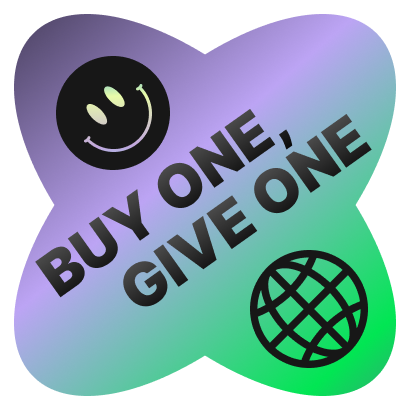What is a brand?
Nine times out of ten the answer will be: a logo. Sometimes it might be: a logo, colour palette and fonts. And you wouldn’t be wrong, these are generally the first steps in creating the foundation of your visual identity, and while obviously crucial, they’re really just the tip of the iceberg.
While a logo will always be the cornerstone of any identity, the solar system of elements which orbit the logo has expanded over time so now here we are in 2022 and the possibilities are seemingly endless. Colour and type always work alongside the logo, however as you explore further outwards you’ll find imagery, shape and patterns, illustrations, icons, graphic devices, motion, sound, spatial design, packaging… and the list goes on.
A visual identity is made up of the sum of its parts
and the more effectively we can pull these elements into our orbit, the more fully formed our brand becomes. This allows us to present to the world with true confidence and meaning.
Stopping at a logo, colours and fonts is a road too often taken for many reasons (budget, time constraints etc.), however when the opportunity arises to build a more comprehensive visual language it should be grabbed with both hands. Every design choice and element added must exist for a reason and serve to communicate your brand’s core purpose and personality. For example, illustration can communicate abstract or dry subjects in an engaging way, photography can build an emotional human connection and motion can convey personality with nuance and ease.
With all these elements in play, the task remains to ensure they work in application, which is where the fun really begins. Often a well crafted brand is applied slapdash which diminishes the care taken in the branding phase when it comes to using it in real world settings.
The importance of brand application
Brand application can’t be understated as it’s where your brand starts to really shine and build equity with your audience. Working seamlessly with copy and a clear tone of voice, each touchpoint should be considered equally important in the system, from your website and social media channels, to packaging and physical spaces. Each moment of engagement is an opportunity to create a connection to the brand.
The audience of today expects a lot from brands in order to win their attention. If they don’t have a completely seamless and enjoyable experience with a brand, they’ll take their business elsewhere without a backward glance. So what can we do to ensure we capture those in our target range?
- Be clear who you are and why you exist
- Understand your audience
With this knowledge, design your brand identity through the lens of these two points by constantly asking: Is this brand conveying who we are and will it resonate with our audience?
Who Gives a Crap is a brilliant example of a brand knowing 100% who it is and embracing it with gusto. From their eDM copy to their packaging design, the experience I have had with the brand as a customer is completely end to end, with every touchpoint carefully considered and crafted down to the call to action on the cardboard cylinder when you finish your loo roll. Their personality is clear as day and highly recognisable, and as such they’re rewarded with a fiercely loyal customer base who go so far as to display WGAC toilet paper proudly in their bathrooms.
At the higher end of the bathroom spectrum is Aesop, a company I have long admired for their craft and finer detail in brand experience. As a complete novice in the realm of skincare, naturally I choose my products based on their visual appeal – enter the iconic brown bottles and perfectly typeset labels. Their visual language and tone of voice is non-threatening and factual, with an edge of science which builds trust. The packaging is beautifully minimal, suggesting the proof is in the pudding. Each store is unique yet completely recognisable as an Aesop shop, from Berlin to Brisbane I know exactly what I’m going to get, which is testament to the strength of their brand that permeates through every touchpoint.
When all the elements of a brand identity are working together seamlessly towards a common goal, they feed into each other and have a compounding effect for the success of the overall visual language. Looking beyond those baseline elements can reveal the true personality and voice of a brand and create surprise and delight for an audience. The power of a fully realised brand system is often underestimated, but (when possible) exploring those outer reaches of their solar system is where the true magic happens.
We acknowledge the Traditional Custodians of the land upon which we create, the Gadigal People of the Eora Nation. We pay our respect to their Elders past and present, and extend that respect to all Aboriginal and Torres Strait Islander peoples today.
Always was, always will be, Aboriginal land.



